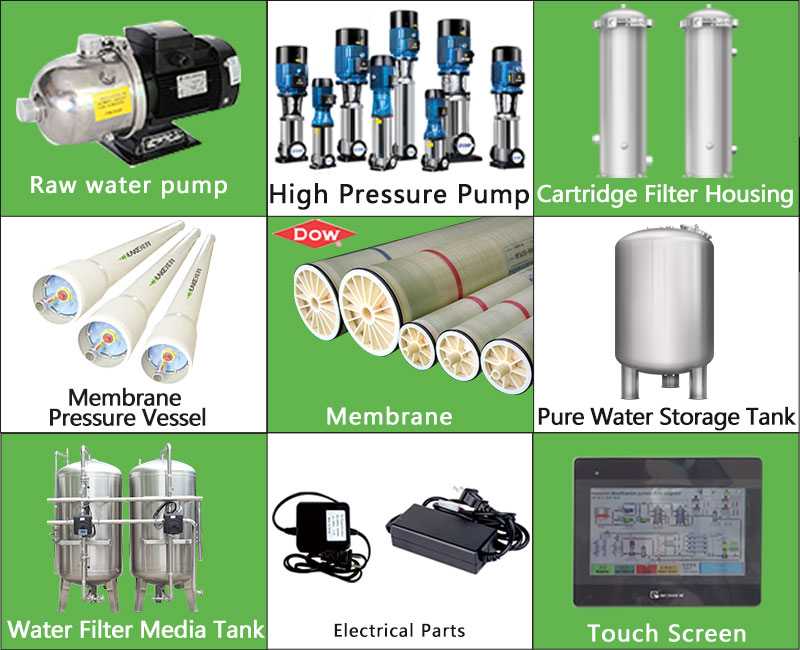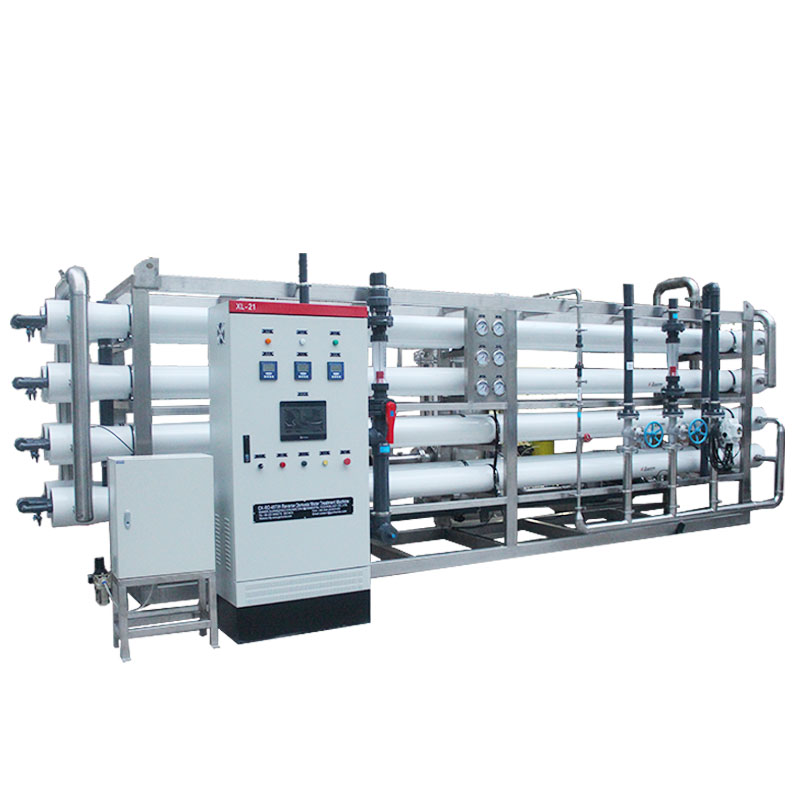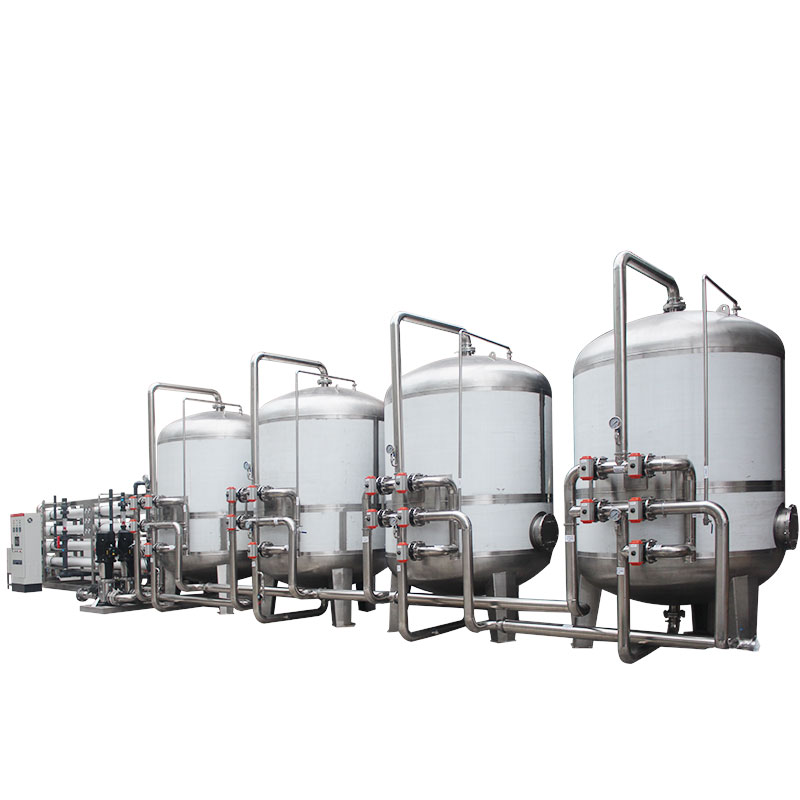What is a three-stage filtration system?
People have higher and higher requirements for the quality of drinking water. Traditional tap water purification methods can no longer fully meet the needs of modern families. As an advanced water treatment technology, the 3-stage filtration system has gradually entered the public eye.
So, what is a three-stage filtration system? How does it work? What are its advantages and application scenarios? This news will analyze this issue in detail for you.

Overview of the 3-stage filtration system
The three-stage filtration system is a multi-stage water treatment technology that removes various pollutants in the water one by one by setting filter elements with different functions in sequence. Its core concept is layered filtration, and each layer of filtration targets different types of pollutants, ultimately achieving comprehensive purification of water quality.
Usually, the three-stage filtration system includes the following three main stages:
1. Primary filtration (Pre-filter): Mainly responsible for removing large particles of impurities in the water, such as silt, rust, suspended matter, etc. This stage usually uses PP cotton filter elements or stainless steel mesh filter elements, which can effectively extend the service life of subsequent filter elements.
2. Middle filter: The main task of this stage is to remove fine particles and some soluble substances in the water, such as residual chlorine, odor, organic matter, etc. Commonly used filter materials include activated carbon filter elements and ultrafiltration membranes. Activated carbon filter elements can effectively remove odors and harmful chemicals in water through adsorption.
3. Post-filter: The last stage of filtration is mainly aimed at microorganisms, heavy metals and other trace harmful substances in water. Common filter materials include reverse osmosis membranes (RO membranes) and nanofiltration membranes. These high-efficiency filter materials can filter out most bacteria, viruses and heavy metal ions to ensure that the water quality meets drinking standards.
What is the working principle of the three-stage filtration system?
The three-stage filtration system treats water quality through various methods such as physical, chemical and biological methods. Its specific working principle is as follows:
1. Physical filtration: Primary filtration mainly relies on physical interception to remove large particle impurities in water. This filtration method is simple and efficient, and can significantly reduce the turbidity of water, providing a good foundation for subsequent filtration.
2. Chemical filtration: Intermediate filtration usually uses the principle of chemical adsorption to remove residual chlorine, odor and organic pollutants in water through materials such as activated carbon. Activated carbon has a developed pore structure and a huge specific surface area, which can adsorb a large number of organic molecules and harmful substances.
3. Biological filtration: Advanced filtration removes bacteria, viruses and heavy metal ions from water through high-efficiency filter membranes. The pore size of these filter membranes is very small, which can effectively intercept microorganisms and harmful substances, ensuring the safety and hygiene of the final water.

What are the advantages of the three-stage filtration system?
Compared with the traditional single filtration method, the three-stage filtration system has significant advantages:
1. Multiple guarantees, safer water quality: The three-stage filtration system can comprehensively remove various pollutants in the water through a multi-level and multi-functional filter element combination to ensure that the final water meets the drinking water standard.
2. Longer filter life: Primary filtration effectively removes large particle impurities and reduces the burden of subsequent filter elements, thereby extending the service life of the entire system and reducing maintenance costs.
3. Wide range of applications: The 3-stage filtration system can be flexibly configured according to different water quality conditions, suitable for a variety of scenarios such as home, office, and industry, with good adaptability and broad application prospects.
4. Easy maintenance: Modern three-stage filtration systems are usually reasonably designed, and the modular structure facilitates users to replace the filter element by themselves, and daily maintenance is simple and convenient.
Application scenarios of 3-stage filtration system
Due to its excellent filtration performance and flexible configuration, the 3-stage filtration system is widely used in the following scenarios:
1. Household drinking water treatment: The three-stage filtration system can effectively improve the quality of household drinking water, remove harmful substances such as silt, residual chlorine, heavy metals, etc. in the water, and ensure the health of family members.
2. Office places: In office buildings and other places, the three-stage filtration system can provide high-quality drinking water and improve the working environment and quality of life of employees.
3. Catering industry: For restaurants, hotels and other catering services, the quality of water directly affects the quality and taste of food. The three-stage filtration system can provide clean and safe water sources to enhance customers' dining experience.
4. Industrial water treatment: In some industrial production processes with high requirements for water quality, the three-stage filtration system can remove impurities and harmful substances in the water to ensure the stability of the production process and the quality of the product.
5. Emergency rescue: In natural disasters or emergencies, the 3-stage filtration system can be quickly deployed to provide safe drinking water for the affected people and avoid secondary disasters caused by water pollution.

Future Outlook
With the continuous advancement of science and technology, the three-stage filtration system is also constantly developing and improving. In the future, with the application of new materials and new technologies, the performance and efficiency of the filtration system will be further improved.
The following are several possible future development directions:
1. Intelligence: Combined with the Internet of Things technology, the future three-stage filtration system can realize intelligent monitoring and remote control. Users can view the water quality and filter life in real time through the mobile phone APP, and perform remote maintenance and management.
2. High efficiency and energy saving: By optimizing the filter material and structural design, the energy consumption of the filtration system can be further reduced, its working efficiency can be improved, and a more environmentally friendly and energy-saving effect can be achieved.
3. Modular design: The future filtration system will pay more attention to modular design, and the filter element can be freely combined and replaced according to different water quality conditions and user needs to improve the flexibility and applicability of the system.
4. Multifunctional integration: In addition to the basic filtration function, the future 3-stage filtration system may also integrate other functions, such as water softening, mineral addition, etc., to provide a more comprehensive and personalized water treatment solution.
In short, as an advanced water treatment technology, the three-stage filtration system has shown great potential in ensuring water quality safety and improving the quality of life.






